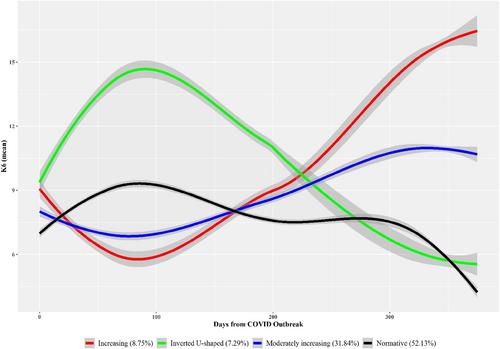The coronavirus disease 2019 (COVID-19) pandemic has constrained opportunities in social, educational and professional domains, leading to developmental challenges for adolescents initiating their transition to adulthood. Meta-analysis indicated that there was a small increase in psychological distress during the first year of the COVID-19 pandemic. However, significant heterogeneity in the psychological response to the COVID-19 pandemic was noted. Developmental antecedents as well as social processes may account for such heterogeneity. The goal of this study was to characterize trajectories of psychological distress in late adolescence during the COVID-19 pandemic.
5014 late adolescents born between 2000 and 2002 from the UK Millennium Cohort Study completed online self-reported assessments at three occasions during the first year of the COVID-19 pandemic (May 2020, September/October 2020 and February/March 2021). These surveys assessed psychological distress, loneliness, social support, family conflict, as well as other pandemic stressors. Information on developmental antecedents were obtained when cohort members were 17 years of age.
Four distinct trajectories class were identified. Normative class (52.13%) experienced low and decreasing levels of psychological distress, while moderately increasing class (31.84%) experienced a small, but significant increase in distress over time and increasing class (8.75%) exhibited a larger increase in distress after the first wave of the pandemic. Inverted U-shaped class (7.29%) experienced elevated psychological distress during the first wave of the pandemic, followed by a decrease in distress in subsequent waves of the pandemic. Larger longitudinal increases in loneliness were noted among individuals in the elevated distress trajectory, compared to other trajectories. Pre-pandemic psychopathology was associated with elevated distress early in the pandemic.
The largest trajectory showed low and declining psychological distress, highlighting the resilience of the majority of late adolescents. However, a subgroup of adolescents experienced large increases in psychological distress, identifying a group of individuals more vulnerable to pandemic-related stress.


